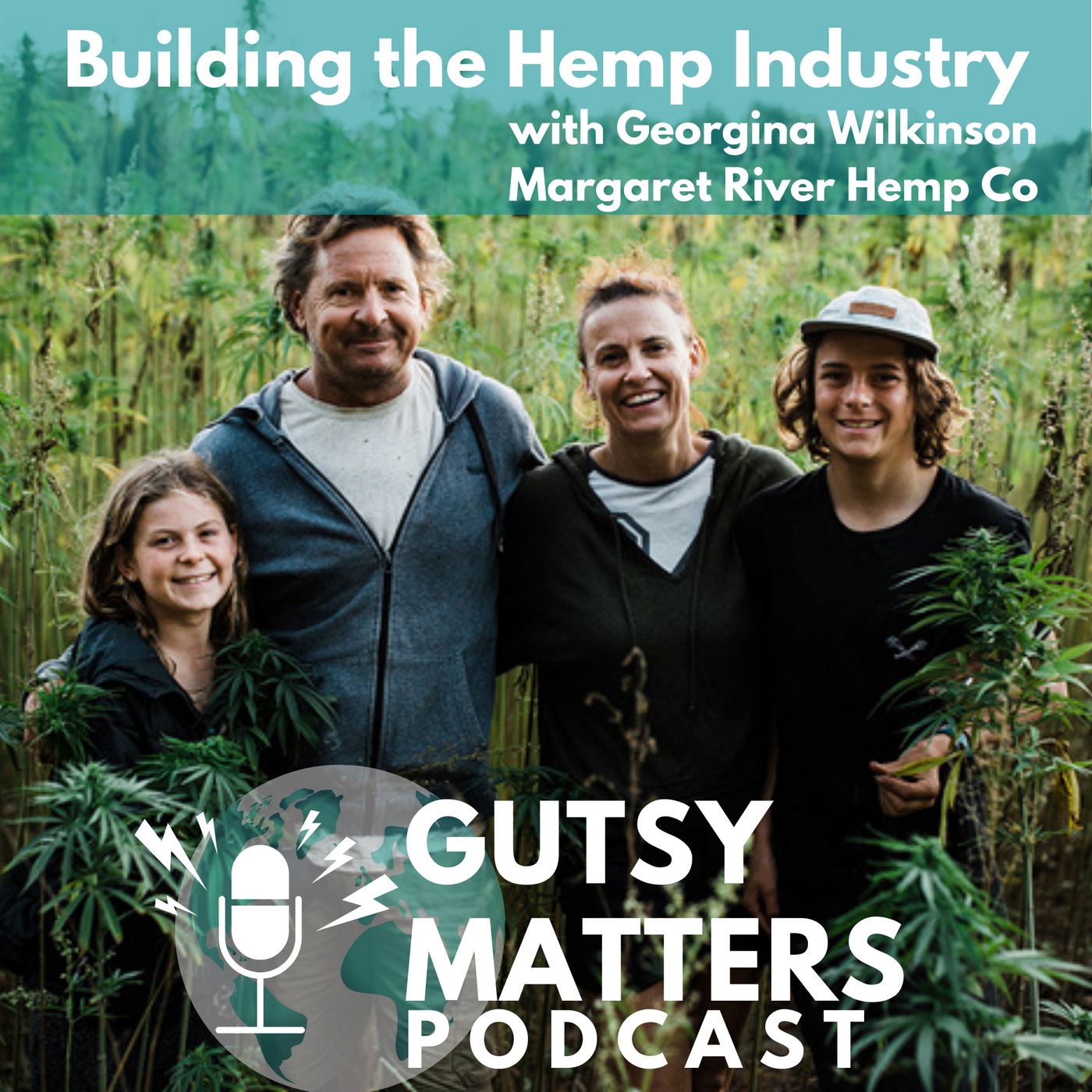Building the Hemp Industry - Expanding Australian Hemp Products

If there is one thing that we've all learnt from the global pandemic it's that we need to go local and be resourceful. That's exactly what Georgina Wilkinson and Gary Rogers from Margaret River Hemp Company are doing. In this episode of Gutsy Matters Podcast we talk with Georgina about the exciting new developments in the Australian Hemp Industry. Georgina is the Vice President of the Australian Industrial Hemp Alliance. To kick off this episode we start with the dilemma of Hemp being a more sustainable fibre crop yet we still heavily rely on less sustainable fibre crops that are more demanding on our precious environment. The Hemp plant uses about 11% of the water required to grow cotton and it fertilises the soil while it grows which means that in Australia it can be cropped three times a year on the same land. The Hemp plant that we're discussing is the Industrial Hemp variety, with very low levels of THC (the main active component in medicinal hemp), even so it's still a fully regulated crop. Western Australia is the second largest industrial Hemp growing region after Tasmania. Georgina explains that Tasmania has specialised in the production and processing of hemp seed and hemp oil and has created a healthy hemp food industry. Hemp food industry has enjoyed rapid expansion since the ban was lifted in 2017. Hulled hemp seed is highly nutritious and has become a prized health food because hemps seeds are rich in fibre, protein and heart-healthy omega 3 and 6 fatty acids. Hemp seed oil is also favoured both as a food and for skincare products. The pulp left after the oil has been pressed from the seeds becomes hemp flour and hemp protein (the difference being the oil content). The health benefits of hemp foods are linked to the new understanding of the human endocannabinoid system and the cannabinoids naturally found in hemp. So whilst Australia has the processing facilities for the Hemp food industry, the facilities for processing fibre are limited. Georgina's been working with Gary and others to change this for Western Australian growers. Hemp fibre processing facilities would open the industry to the potential for manufacturing hemp plastic, hemp paper, hempcrete for hemp homes and hemp fabric, just to name a few. Even then, we still wouldn't be using the whole hemp plant including the flowers and leaves - it truly is the plant that keeps giving. The hemp fibre that is used in hempcrete for building is the hemp hurd, it's the inside of the long straight stalk or stem of the hemp plant. The outside of the hemp stem is stripped off for the fibre that is used for textiles, hemp fabric and hemp clothing. Currently the world leaders in hemp fibre and hemp textiles are in China, yet ever hopeful, we ask Georgina about the Australian textiles industry! Hemp bio-composite plastics (otherwise known as hemp plastic) and even hemp weed matting are the next products that are on the horizon of the hemp industry. The world desperately needs natural fibre replacements for plastic products. It's ironic really because the invention of nylon and plastic by Dupont was what ruined the hemp industry, you can read about the history here. The history of Hemp plastics begins with Henry Ford and the plastic car he built in 1941. It was made from a bio-composite plastic, that included hemp, and was 10 times stronger than steel. Newspaper articles from the time reported that Henry Ford was proud of plastic car for being lighter, safer and less expensive than cars made from steel. He even collaborated with Rudolf Diesel to desig...